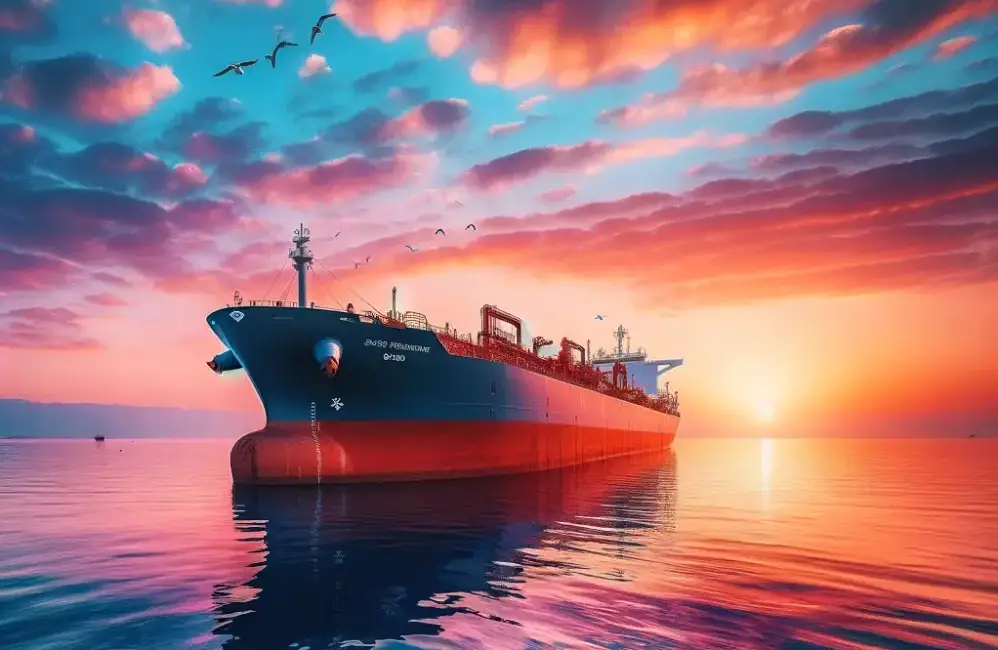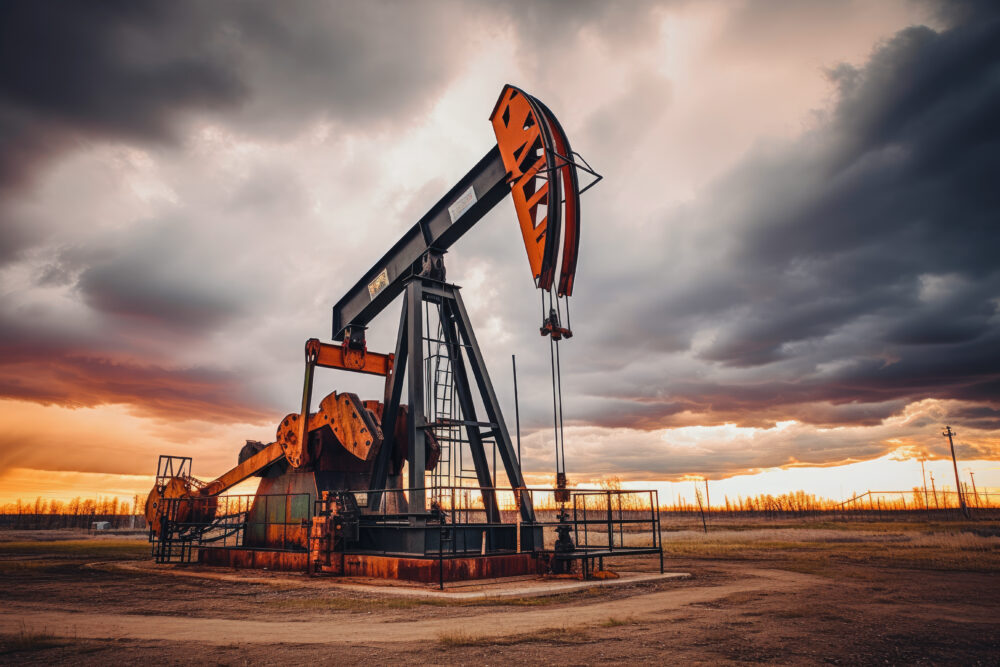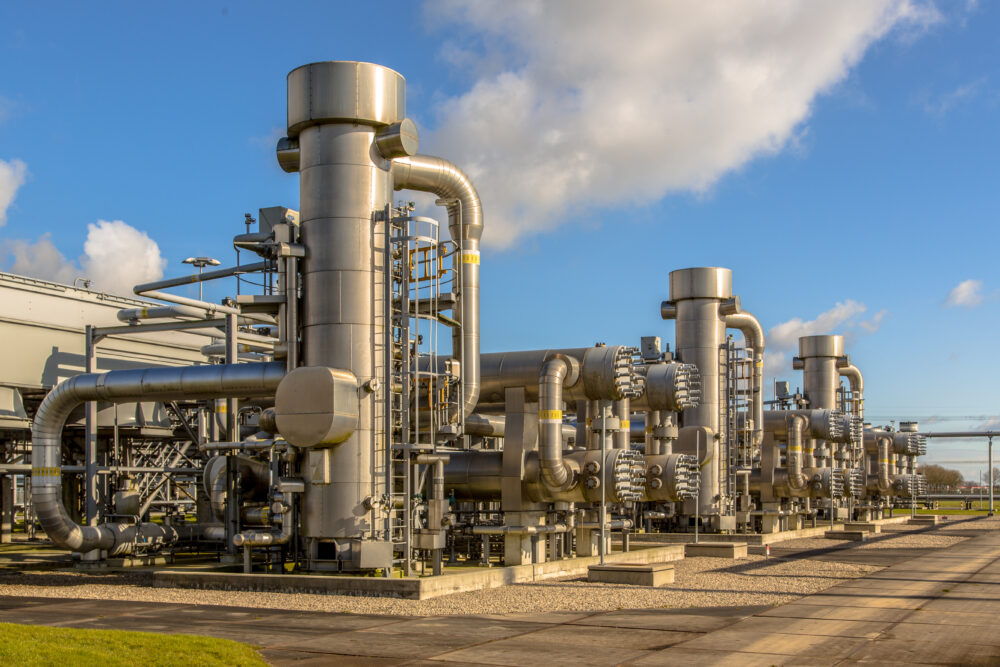Iran Oil Exports and Red Sea Strategy: Impact on Global Oil Markets
Share This Story, Choose Your Platform!
Iran’s Strategic Maneuvers in the Red Sea: Iran Oil Exports and Geopolitical Interests
Iran’s strategic actions in the Middle East, especially its support for the Houthi rebels and its interactions with Hamas, have significant repercussions for the global oil markets and Iran oil exports. While we have navigated away from intense volatility so far, continued aggression may change that. This analysis explores the multifaceted nature of Iran’s regional power ambitions and its impact on the stability of oil, a critical global economic asset, especially in the context of the Red Sea region.
Iran’s Economic Backbone: The Oil and Natural Gas Sector
The pivotal role of oil and natural gas in Iran’s economy cannot be overstated. Representing approximately 18% of its GDP, these resources are not mere commodities but the lifeblood of Iran’s economy. Consequently, the stability of oil prices transcends economic concerns, becoming a matter of national significance. The recent escalation of tensions in the Red Sea region, primarily due to Iran-backed Houthi aggression, directly threatens this stability. The Red Sea’s strategic importance, serving as a conduit for around 12% of global oil shipments, amplifies the impact of regional instability, risking a vital economic artery.
The Ripple Effects of Regional Instability on Oil Trade
The conflicts in the Red Sea, initiated by Houthi actions and the subsequent military responses, have led to a notable shift in oil tanker routes. Tankers are increasingly diverting from their usual paths to circumvent conflict zones, a decision carrying substantial financial repercussions. Rerouting around the Horn of Africa, for instance, entails additional costs of approximately $85,000 per day for each tanker as reported by Marhelm, a factor that could disrupt the global oil supply chain, affecting prices and availability.
Iran’s Oil Exports in the Global Arena
Iran’s record oil exports to China in November 2023 highlight the criticality of stable Red Sea routes. However, escalating regional tensions, shaped by Iran’s policies and affiliations, threaten this economic lifeline. Iran’s dual strategy of supporting the Houthis in Yemen and Hamas in Palestine mirrors its broader regional aspirations but is fraught with risks, including destabilizing essential trade routes and attracting international sanctions.
Strategic Risks and Global Oil Market Dynamics
Iran’s backing of groups like the Houthis and Hamas is a strategic gamble in Middle Eastern geopolitics, affecting regional stability and global oil trade. Former President Donald Trump’s decision to exit the Iran nuclear deal marked a significant turning point for Iran’s oil revenue. Post-exit, Trump reinforced sanctions against Iran and Iran oil exports, leading to a substantial decline in its oil revenues. Prior to the imposition of these sanctions, Iran’s oil export revenue was at a peak of $60.5 billion. However, the impact of the reinforced sanctions was stark and immediate, with revenues plummeting to $19.4 billion in 2019 and then further descending to a low of $7.9 billion in 2020.
The trajectory of Iran’s oil revenue witnessed a notable change with the commencement of President Biden’s tenure. Under his administration, the enforcement of sanctions on Iranian oil exports became less stringent. This policy shift played a pivotal role in reviving Iran’s oil sector. As a result, there was a significant recovery from the 2020 low, with oil revenues increasing exponentially. By 2022, Iran’s oil export revenue saw a remarkable rebound, climbing to $42.6 billion. Although this figure was still below the peak seen in 2018, it marked a significant recovery from the lows experienced during the height of the sanctions.
In 2023, Iran’s oil industry achieved a milestone, recording its highest oil exports since 2018. This resurgence was underpinned by a more than 50% increase in oil production, which approached 3.2 million barrels per day (MBPD). The relaxation of sanctions under President Biden’s administration has certainly played a critical role in facilitating this recovery, enabling Iran to significantly boost its oil exports and revenue.
Tehran thus faces a critical decision: whether to risk its burgeoning oil revenue to stringent global sanctions.
Navigating Oil Price Fluctuations Amid Global Concerns
As Iran grapples with the intricacies of the global oil market, it faces a critical juncture amid volatile oil prices. Price surges pose a risk of destabilizing the global market, potentially leading to adverse economic impacts both internationally and within Iran. In response, Tehran is likely calculating how much it can engage in international activities that could be seen as destabilizing without tipping the oil market into complete instability.
The fiscal landscape for Iran in 2024 appears challenging, with a potential budget deficit on the horizon. This is compounded by the fact that Iran has lost over a quarter of its oil export revenue due to evading sanctions and offering discounts to China. In light of these factors, Iran’s approach to oil exports is one of cautious navigation. Current reports indicate an objective to export approximately 1.35 million barrels per day, targeting an average price of around $71 per barrel.
However, there are looming concerns about the potential escalation of oil prices, which may be driven by Iran’s involvement in activities that disrupt maritime shipping in the Red Sea. This situation could lead to a complex economic scenario for Iran, where the country faces heightened financial pressures, exacerbating existing challenges, including its budget deficit.
Conclusion: Iran’s Balancing Act in a Complex Geopolitical Arena
Iran’s maneuvers in the Red Sea, its support for regional groups, and its nuanced oil export strategies are pivotal elements in a complex geopolitical landscape. Tehran’s ability to balance its regional ambitions with the importance of its oil market is critical for shaping its economic future and the stability of global oil trade. With the prospect of stricter sanctions on Iranian oil, especially considering Donald Trump’s position as the betting favorite for the 2024 Presidential election, Tehran’s support for the Houthis’ actions in the Red Sea could see significant changes over the next 10 months to Iran oil exports.
If you found this article interesting, you may want to visit our most recent crude oil analysis as well. You can find that here!
Share This Story, Choose Your Platform!
Iran Oil Exports and Red Sea Strategy: Impact on Global Oil Markets
Share This Story, Choose Your Platform
Iran’s Strategic Maneuvers in the Red Sea: Iran Oil Exports and Geopolitical Interests
Iran’s strategic actions in the Middle East, especially its support for the Houthi rebels and its interactions with Hamas, have significant repercussions for the global oil markets and Iran oil exports. While we have navigated away from intense volatility so far, continued aggression may change that. This analysis explores the multifaceted nature of Iran’s regional power ambitions and its impact on the stability of oil, a critical global economic asset, especially in the context of the Red Sea region.
Iran’s Economic Backbone: The Oil and Natural Gas Sector
The pivotal role of oil and natural gas in Iran’s economy cannot be overstated. Representing approximately 18% of its GDP, these resources are not mere commodities but the lifeblood of Iran’s economy. Consequently, the stability of oil prices transcends economic concerns, becoming a matter of national significance. The recent escalation of tensions in the Red Sea region, primarily due to Iran-backed Houthi aggression, directly threatens this stability. The Red Sea’s strategic importance, serving as a conduit for around 12% of global oil shipments, amplifies the impact of regional instability, risking a vital economic artery.
The Ripple Effects of Regional Instability on Oil Trade
The conflicts in the Red Sea, initiated by Houthi actions and the subsequent military responses, have led to a notable shift in oil tanker routes. Tankers are increasingly diverting from their usual paths to circumvent conflict zones, a decision carrying substantial financial repercussions. Rerouting around the Horn of Africa, for instance, entails additional costs of approximately $85,000 per day for each tanker as reported by Marhelm, a factor that could disrupt the global oil supply chain, affecting prices and availability.
Iran’s Oil Exports in the Global Arena
Iran’s record oil exports to China in November 2023 highlight the criticality of stable Red Sea routes. However, escalating regional tensions, shaped by Iran’s policies and affiliations, threaten this economic lifeline. Iran’s dual strategy of supporting the Houthis in Yemen and Hamas in Palestine mirrors its broader regional aspirations but is fraught with risks, including destabilizing essential trade routes and attracting international sanctions.
Strategic Risks and Global Oil Market Dynamics
Iran’s backing of groups like the Houthis and Hamas is a strategic gamble in Middle Eastern geopolitics, affecting regional stability and global oil trade. Former President Donald Trump’s decision to exit the Iran nuclear deal marked a significant turning point for Iran’s oil revenue. Post-exit, Trump reinforced sanctions against Iran and Iran oil exports, leading to a substantial decline in its oil revenues. Prior to the imposition of these sanctions, Iran’s oil export revenue was at a peak of $60.5 billion. However, the impact of the reinforced sanctions was stark and immediate, with revenues plummeting to $19.4 billion in 2019 and then further descending to a low of $7.9 billion in 2020.
The trajectory of Iran’s oil revenue witnessed a notable change with the commencement of President Biden’s tenure. Under his administration, the enforcement of sanctions on Iranian oil exports became less stringent. This policy shift played a pivotal role in reviving Iran’s oil sector. As a result, there was a significant recovery from the 2020 low, with oil revenues increasing exponentially. By 2022, Iran’s oil export revenue saw a remarkable rebound, climbing to $42.6 billion. Although this figure was still below the peak seen in 2018, it marked a significant recovery from the lows experienced during the height of the sanctions.
In 2023, Iran’s oil industry achieved a milestone, recording its highest oil exports since 2018. This resurgence was underpinned by a more than 50% increase in oil production, which approached 3.2 million barrels per day (MBPD). The relaxation of sanctions under President Biden’s administration has certainly played a critical role in facilitating this recovery, enabling Iran to significantly boost its oil exports and revenue.
Tehran thus faces a critical decision: whether to risk its burgeoning oil revenue to stringent global sanctions.
Navigating Oil Price Fluctuations Amid Global Concerns
As Iran grapples with the intricacies of the global oil market, it faces a critical juncture amid volatile oil prices. Price surges pose a risk of destabilizing the global market, potentially leading to adverse economic impacts both internationally and within Iran. In response, Tehran is likely calculating how much it can engage in international activities that could be seen as destabilizing without tipping the oil market into complete instability.
The fiscal landscape for Iran in 2024 appears challenging, with a potential budget deficit on the horizon. This is compounded by the fact that Iran has lost over a quarter of its oil export revenue due to evading sanctions and offering discounts to China. In light of these factors, Iran’s approach to oil exports is one of cautious navigation. Current reports indicate an objective to export approximately 1.35 million barrels per day, targeting an average price of around $71 per barrel.
However, there are looming concerns about the potential escalation of oil prices, which may be driven by Iran’s involvement in activities that disrupt maritime shipping in the Red Sea. This situation could lead to a complex economic scenario for Iran, where the country faces heightened financial pressures, exacerbating existing challenges, including its budget deficit.
Conclusion: Iran’s Balancing Act in a Complex Geopolitical Arena
Iran’s maneuvers in the Red Sea, its support for regional groups, and its nuanced oil export strategies are pivotal elements in a complex geopolitical landscape. Tehran’s ability to balance its regional ambitions with the importance of its oil market is critical for shaping its economic future and the stability of global oil trade. With the prospect of stricter sanctions on Iranian oil, especially considering Donald Trump’s position as the betting favorite for the 2024 Presidential election, Tehran’s support for the Houthis’ actions in the Red Sea could see significant changes over the next 10 months to Iran oil exports.
If you found this article interesting, you may want to visit our most recent crude oil analysis as well. You can find that here!






